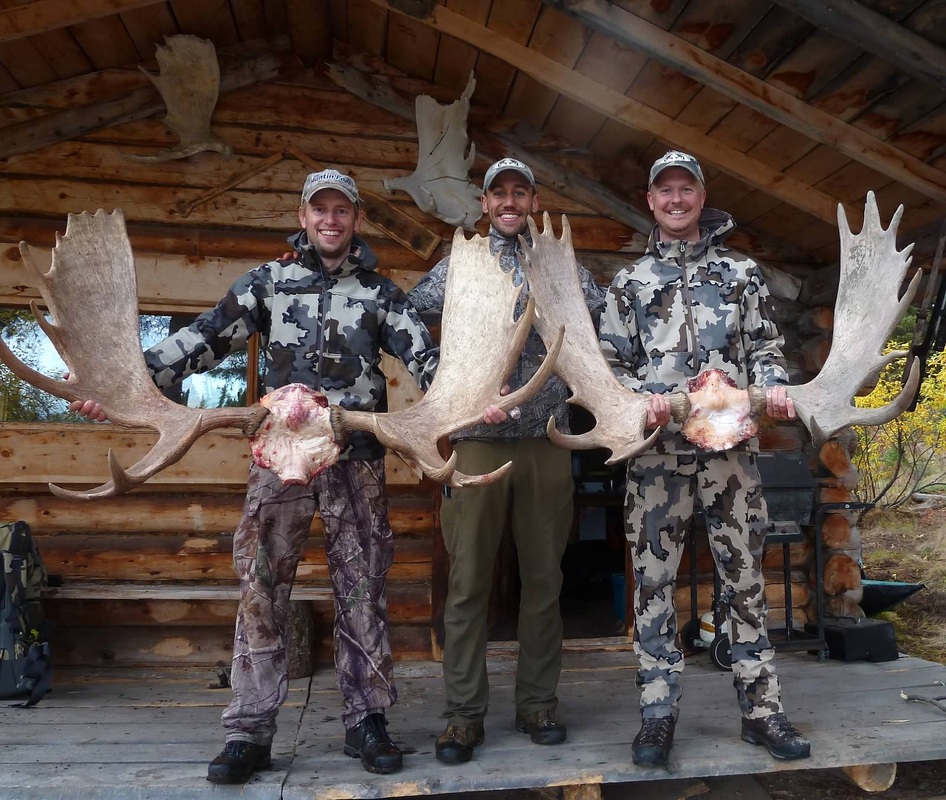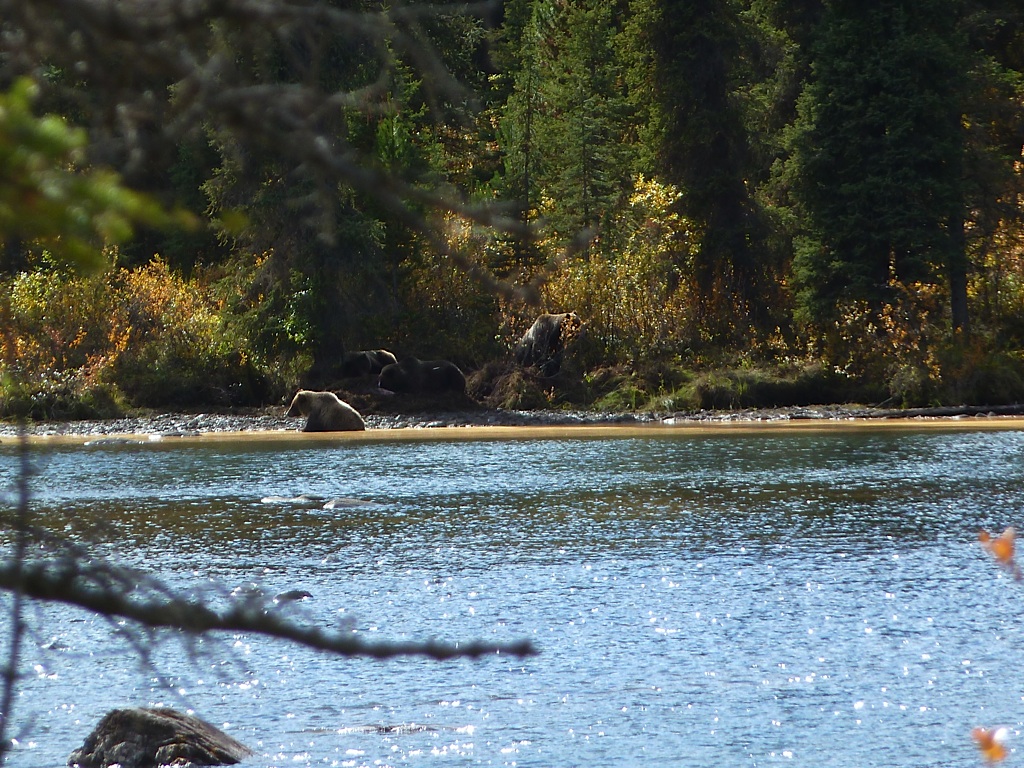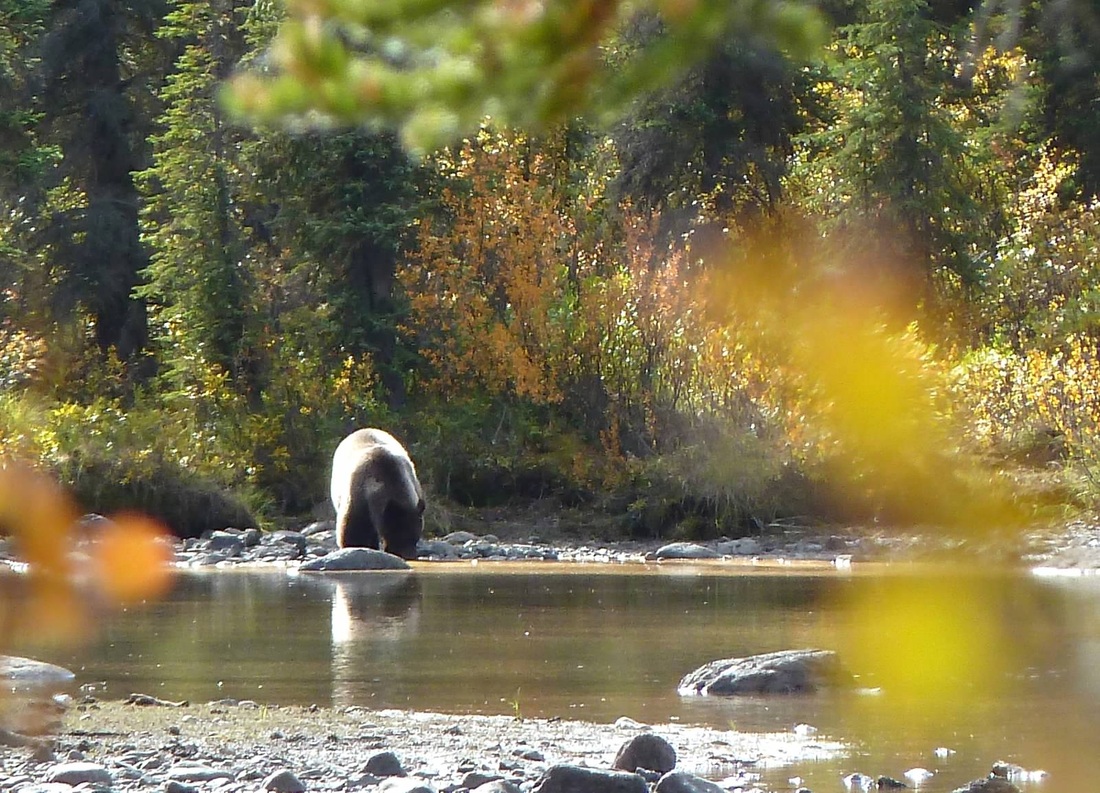As I write this I sit before a breathtaking panorama, shades of red and gold, dotted with splotches of dark green where spruce and subalpine fir have disrupted the cover of willows and swamp birch stretch out to the horizon. I am on the Spatsizi Plateau and it is one of the most painfully beautiful places I have ever seen. Although my hunt for caribou and grizzly bears has not yet been successful, I have found everything I had hoped for, and so much more. I wish that I could bottle and keep for a gloomy day this amazing feeling, these waves of joy that I am experiencing as I drink in the wilderness of the Spatsizi. I yearn for the day when my children and my children’s children can also partake in the beauty of this land.
Looking around me, the Spatsizi is not really what I had envisioned before the beginning of my journey. Rather than being one large, flat, elevated piece of wilderness, the Spatsizi I see is a series of interconnected, flat-topped ridges that stretch for miles, many of which I’ve walked today. It is a glorious day, notwithstanding that I’ve yet to cut a tag. The weather is almost tropical (particularly for mid-September at 6500 feet), the scenery spectacular and the wild animals plentiful. So far I have counted fifteen caribou, thirteen goats and three moose, with the evening hunt still to come. It is day four of my adventure but we should probably start from the beginning…

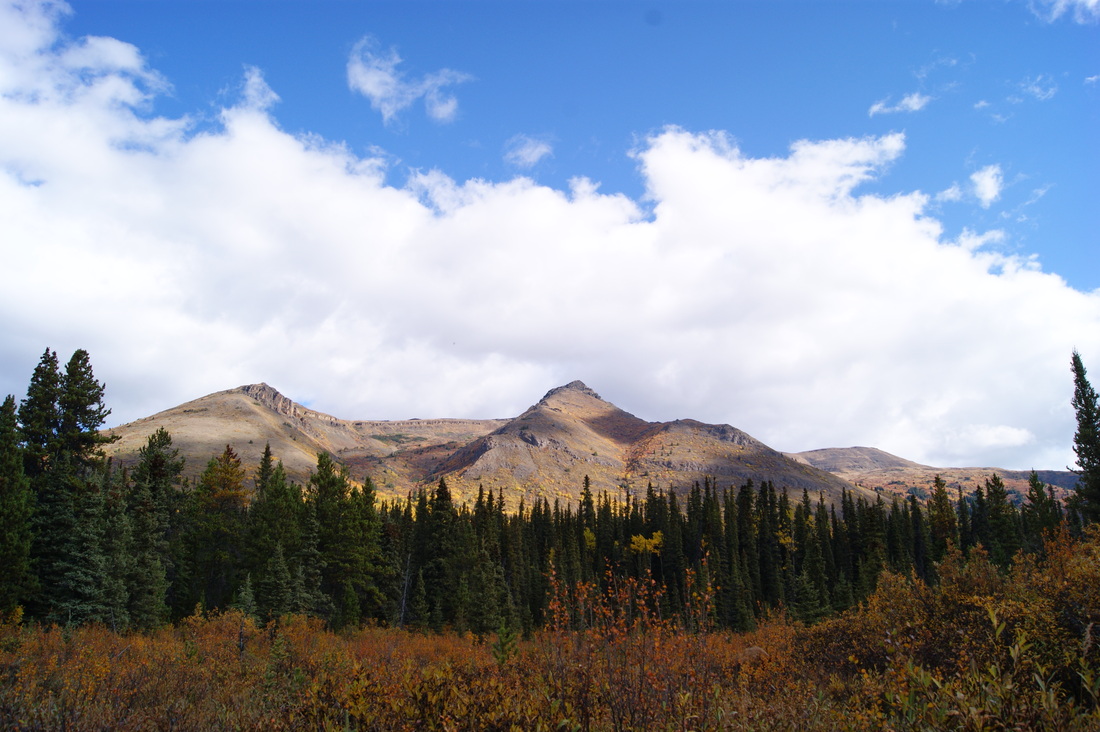
After admiring the scenery and glassing a couple of goats across the lake in the Ecological Reserve that’s closed to hunting and some additional goats Northeast of us in an area that we can hunt, we haul our gear up to the cabin we’ve arranged to rent. It’s fairly rustic, to say the least. There are a few mouse traps scattered around inside the cabin, some of them “occupied”, and a number of chewed up green foam mats hanging from the rafters. Outside, nailed to the front of the cabin, are two enormous moose sheds, including one from a bull that must have grossed 200” or more, and a broken, hand-made wooden paddle. When I return from the Spatsizi, I learn that another of my hunting partners nailed the sheds and paddle to the front of the cabin. Even when in the wilds of the North, the world is indeed small. The cabin’s other amenities include basic wooden beds, a wood stove, and an ancient Coleman Stove that Colin eventually masters during the course of our stay.
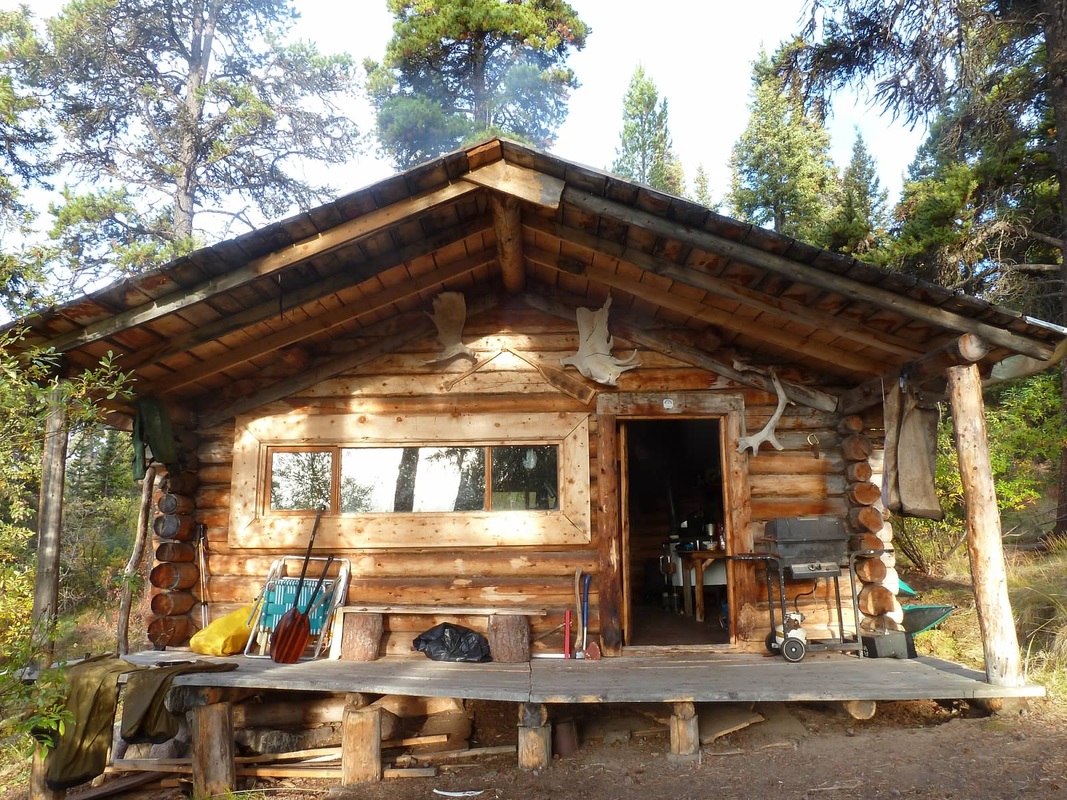
At about 9:15 am we stop above a small lake southeast of the cabin. I let out a couple of bull calls and thrash a tree and the surrounding willows with a dead limb. Almost immediately I hear the Wuuh! Wuuh! of a bull moose, and it sounds like he’s coming. I encourage him along with more thrashing and a couple more bull calls, but suddenly four shots ring out several hundred yards away. Adam and I traverse the lake we were calling from to find Colin just upstream of the creek mouth with a beauty bull moose he’d called in laying on the ground. Amazingly, we’d each been calling back and forth with two different bulls! Much to my and Adam’s chagrin, the edge of the creek is an absolute mud pit that grows deeper and deeper as we skin out and cut up Colin’s moose. It’s an awful place to have to deal with a moose, but we manage.
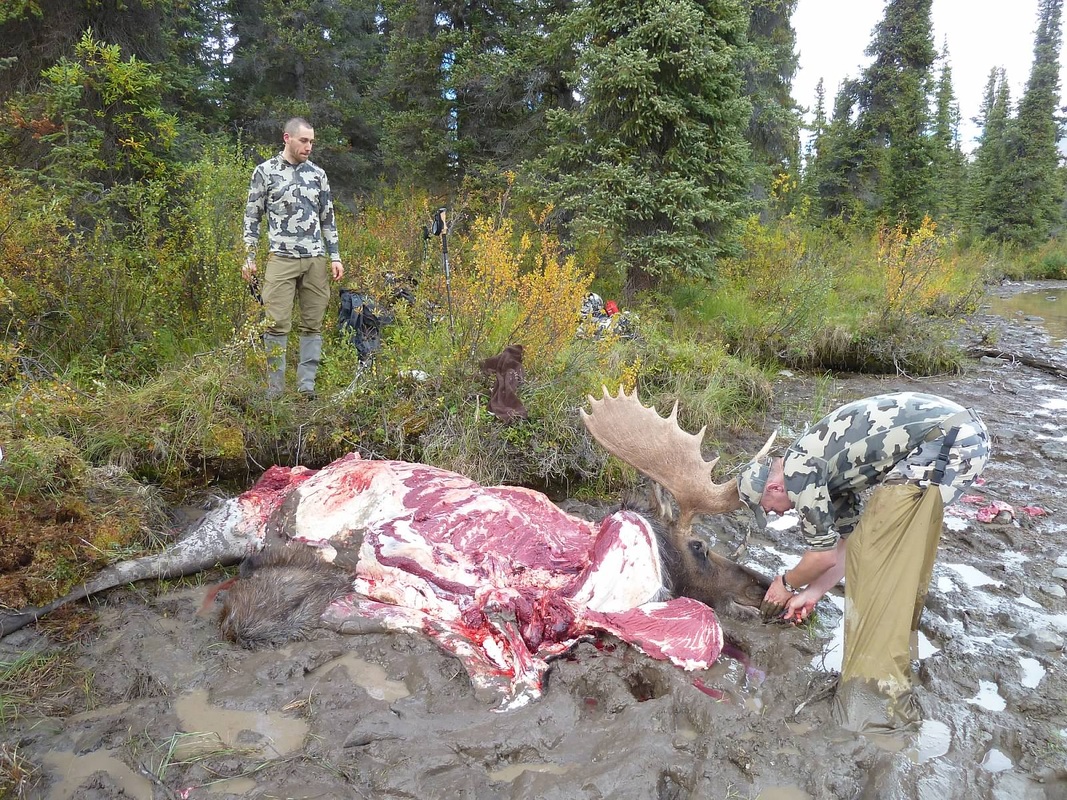
On day two we sleep in after the grueling task of dealing with Colin’s moose the day before. Certain individuals, who shall remain nameless, are feeling a little rough from celebrating yesterday’s success, so it’s not a hard-hunting day. We do some moose calling, but it proves less effective than the day before, perhaps because of Adam’s constant urging of me NOT to shoot another moose, as he wants to go high for sheep and goats the next day. Although we do not see any moose, just after dark we hear one splashing around in the bay next to our cabin. Needless to say, the moose are on the move.
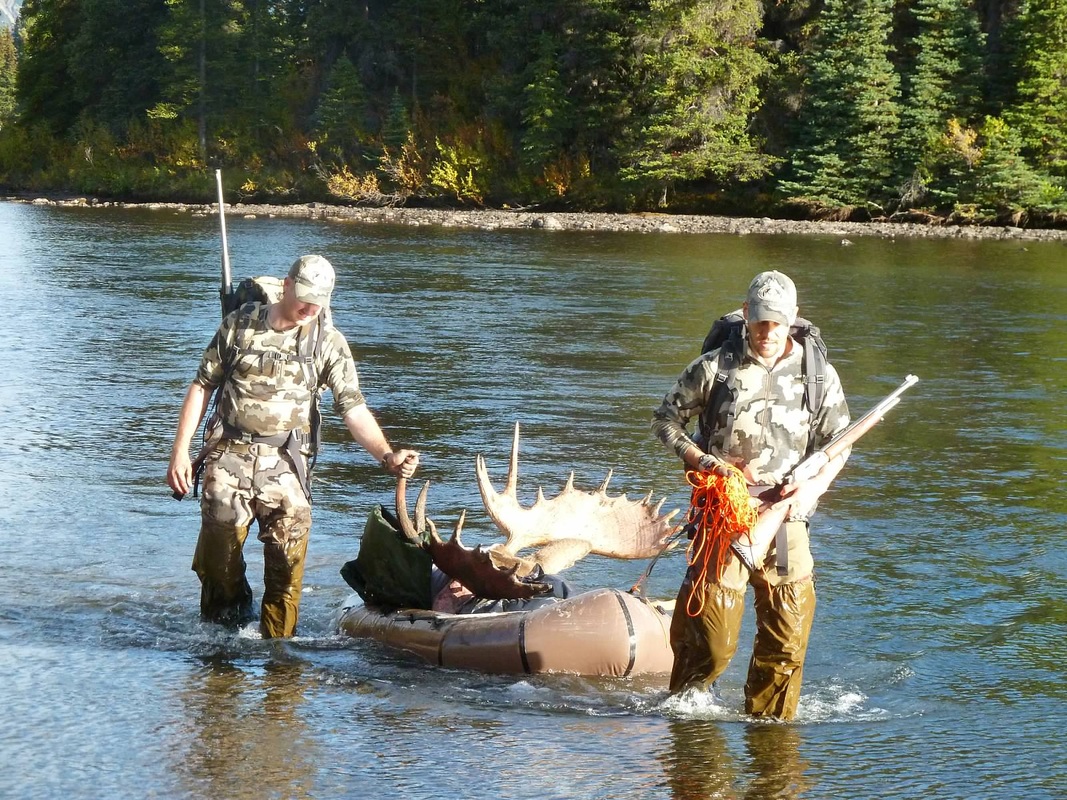
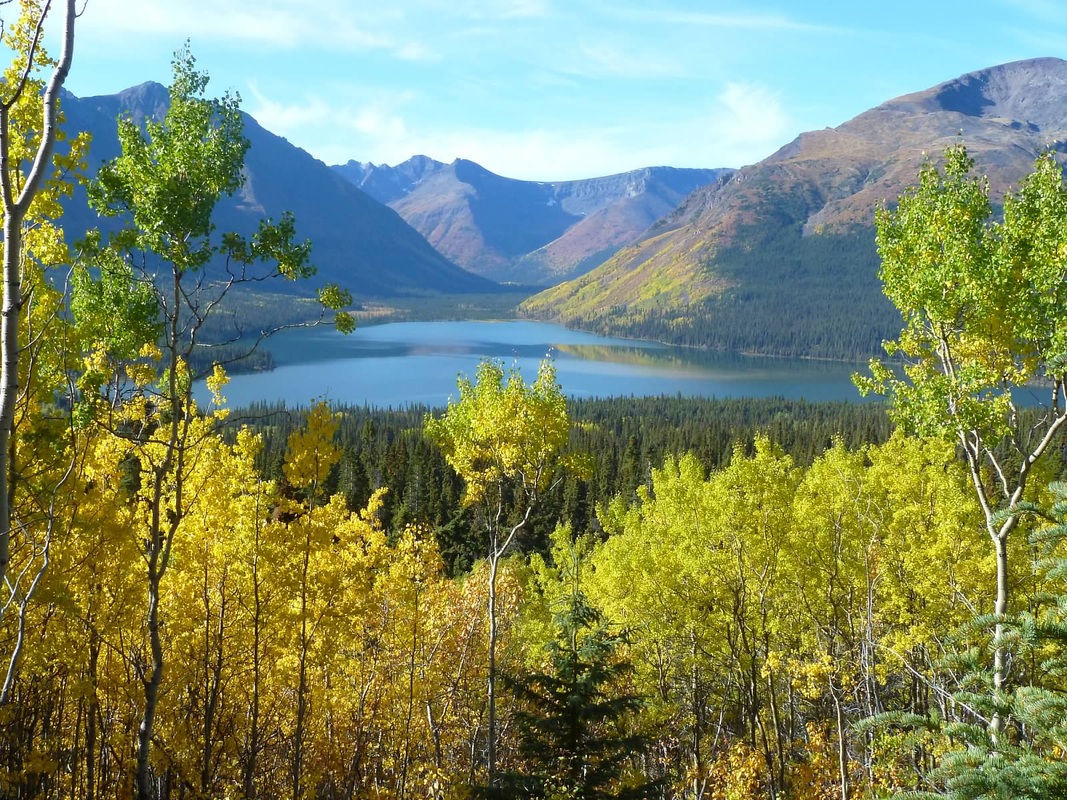 Following my unsuccessful attempt to find the bull, we pack up camp and head out on the horse trail, leaving it after a kilometre or so to strike out through the brush towards the alpine. It’s a slog – very steep and thick brush in places. After a few hours we make camp near a small pond in the alpine, with the skull and bones of a nice bull caribou scattered next to it. Adam and I head up a nearby ridge for an evening hunt. I spot a young bull and a cow caribou, the first of the trip, but the evening is otherwise unproductive. We turn in exhausted from the day’s activity.
Following my unsuccessful attempt to find the bull, we pack up camp and head out on the horse trail, leaving it after a kilometre or so to strike out through the brush towards the alpine. It’s a slog – very steep and thick brush in places. After a few hours we make camp near a small pond in the alpine, with the skull and bones of a nice bull caribou scattered next to it. Adam and I head up a nearby ridge for an evening hunt. I spot a young bull and a cow caribou, the first of the trip, but the evening is otherwise unproductive. We turn in exhausted from the day’s activity.
The next morning Colin elects to hunt near camp, while Adam and I head up to the ridge in search of sheep, goats and caribou. We spot a group of four caribou on a distant ridge, three young bulls and a cow, but none of them are big enough to interest us. We then spot a group of three goats in the opposite direction. There’s a nanny and kid, along with a third goat that’s too far away to determine the sex, but which is likely also a nanny given the company it’s keeping. Adam and Colin have tentative plans to pack up and head back down to the lake so that they can move further down the horse trail and hike up to where we have seen the greatest numbers of goats, but now Adam is uncertain about whether to do that or to go after the three goats he can see now. Mid-morning he heads back down to our spike camp to find Colin, still uncertain as to whether they will try for the goats. He tells me that if their tent is gone, then it means they’ve gone back to the cabin to drop their heavier gear before heading elsewhere in search of more goats. I tell Adam that I’ll spend the rest of the day and that night on the Plateau, before hiking down the following afternoon to join up with them again.
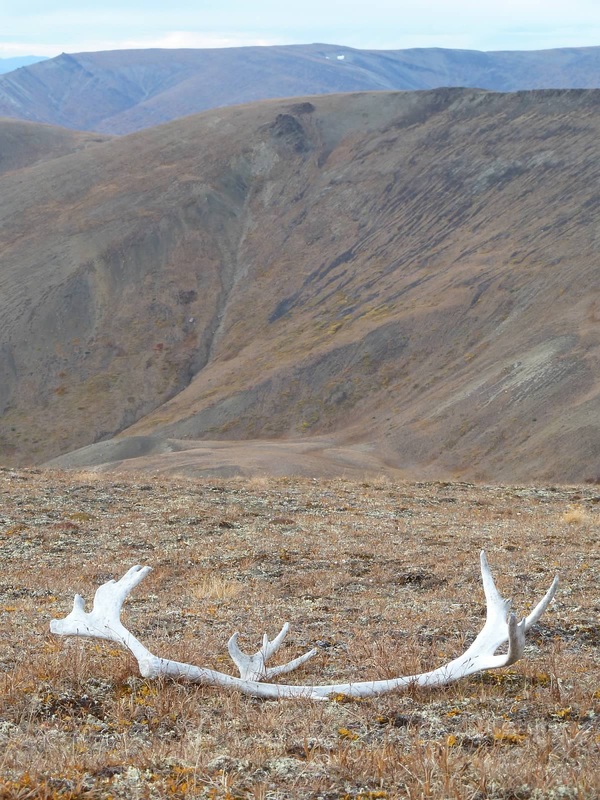
I continue North, eventually reaching what I take to be the edge of the Spatsizi Plateau in the late afternoon. I sit to glass and write the beginning of this story. I phone my wife to share my experience with her, and while I’m on the satellite phone I see what appear to be two large white paddles several kilometres further north. I pull out my binoculars and see the largest bull moose I’ve ever seen, and perhaps ever will see. His antlers have enormous palmated fronts, great paddles and at least a dozen points per side. He will easily go book, but there’s no way we would ever be able to pack him out without horses, even if I was able to get to him. I admire him for some time before gradually hunting my way back towards camp, spotting several more goats on the way and arriving just after dark. I’m disappointed to discover that Colin and Adam have in fact packed up their tent and headed back down to the lake, but elated to have seen 37 animals during the course of the day.
After spending the night on the Plateau, I pack up camp beneath a blanket of clouds with the rain spattering around me. It’s the first day we’ve seen anything but clear skies and warm weather. I head up past the small pond that had been my water source to a saddle that provides access into the next valley. Although I glass this valley for some time, I’m not able to turn up any animals. My descent back to our lake and the cabin takes me about two hours. Initially the way is steep and relatively free of brush, but as I lose elevation I enter thick patches of willows, 10 feet or more in height. Knowing that the Spatsizi has one of the highest density grizzly bear populations in British Columbia, it’s a nerve-racking experience working my way through willows so thick that at times I can scarcely see five feet in front of me. In many instances I have to bull my way through the brush, but for the most part I’m able to follow game trails and creek beds as I make my way down.

Four Of The Five Grizzlies On The Kill
We hurry back down the horse trail, abandoning that for a trail that forks south towards the creek where Colin had shot his moose. About 100 yards from the creek we leave the trail to sneak through the swamp birch, willows and scrub spruce trees so as to come out directly opposite the kill site, about 150 yards away across the creek. As we near the creek we can see the kill site through the brush. I glass the site and immediately see bears – but not just two. I count three, then four, and finally FIVE grizzlies on the kill! It’s a tense situation with that many bears together, particularly given that they are on a kill and will likely respond aggressively to any perceived threat. I snap a couple of quick pictures and take a short video. After watching the bears in awe for what felt like hours but in reality was merely a few minutes, we back out carefully without incident, keeping trees and cover between us and the bears as we go.
Sow Off To The Left Of The Other Bears
After seeing the bears Adam and I spend a great deal of time talking and thinking about how or where we could set-up to catch the bears coming off the kill and therefore safely harvest one or two of them away from the carcass, but we cannot come up with any creative plans that don’t end with one or both of us as bear scat. With the thick willows and black spruce stretching for miles around the kill site, the prospect of following up on a wounded bear or two with three or four other unwounded bears running around in the vicinity is remarkably unappealing.
The next day we awake to low hanging clouds and a distinct drop in the temperature. Adam’s plan to go after the goats to the Northeast is out of the question so we hunt moose in the early morning hours and then Adam and I decide to head in the direction of the grizzlies again but this time by following the creek in the hopes the bears would use this natural “roadway” when they left the kill. With five bears all sharing the meager remains of Colin’s moose, we figured they’d be separating and dispersing into the timber and valley bottom sooner than later. Colin wants no part of this, and will no doubt claim for years to come that Adam and I have no bear sense whatsoever, but we prove him wrong. When we’re still some distance from the kill, Adam and I realize that we won’t have a clear view of the kill site until we’re within a hundred yards – too close for comfort with a now unknown number of bears possibly still on the kill or in the thick willows and timber around us. We abort the plan, thereby demonstrating at least a modicum of common sense, and hunt our way back towards camp. I can tell that Colin and Adam are not really into it – Colin already has his moose, and this style of hunting doesn’t suit Adam’s preferences. I call them on it and suggest that they go back to the cabin to celebrate Colin’s moose (again), and they take me up on it. I call until dark but am not able to turn up another moose.
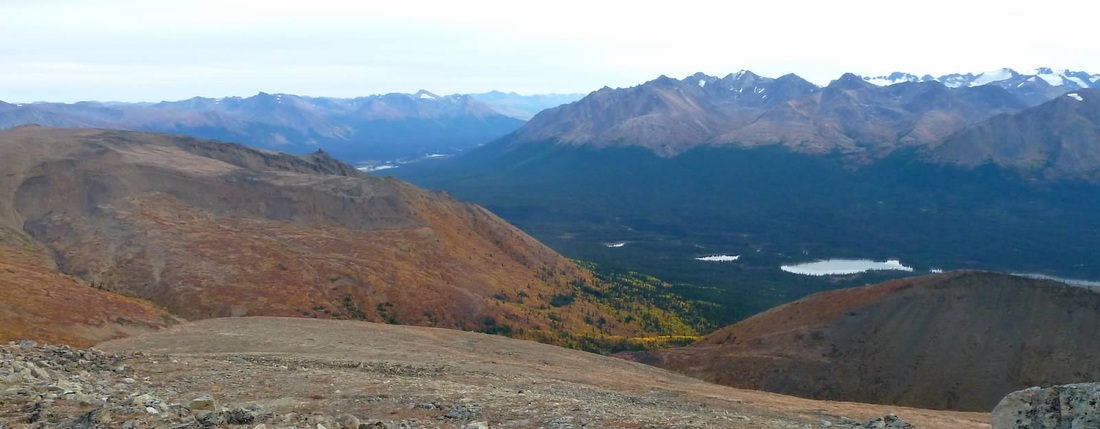
Adam joins me and we do a running stalk as the moose continues to work his way along the shore and into the creek. We lose sight of him as we circle into the willows to avoid being spotted and then come out on the edge of the creek, about 75 yards from where I’d been calling just twenty minutes earlier. I glass across the creek but can’t see the bull. As I step around a point along the creek edge I look to my left and there he is. He’s crossed the creek to our side and is within steps of my last calling location. I sit down, put the crosshairs on his shoulder and pull the trigger. He lunges forward into the willows, and as Adam runs by me I yell, “If you can see him, hammer him again!” Moments later Adam, who’s now up on a small rise, says he’s down. I can’t believe it and ask him several times to confirm his claim. I run up to where the bull has fallen, and put an extra round into him to ensure that he’s down for good.
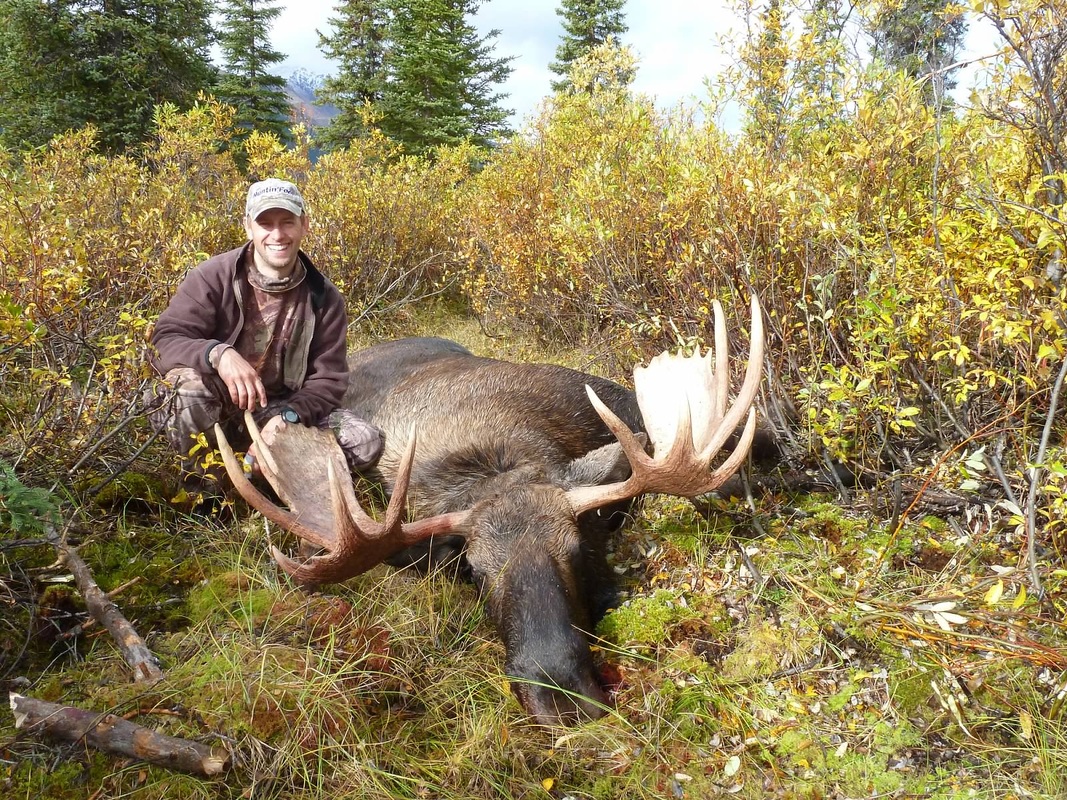
Sadly, the next day will be our last in Spatsizi. We pack our gear down to the lake, watching the skies with concern as the weather has really taken a turn for the worse. There are whitecaps on the lake and roiling clouds above, and we wonder whether the plane will make it in to take us out. Despite our fears, mid-morning we hear the musical sound of an approaching plane. We load up most of the moose meat, Colin’s gear, and Colin himself. Adam and I, along with the rest of the moose and gear, will have to wait for a second flight. Even so, the plane has trouble getting off the lake with the weight it is carrying. An hour later it returns, and Adam and I are also homeward bound. The flight out is neither as smooth nor as beautiful as the flight in, but we make it out safely, which is what really matters.
